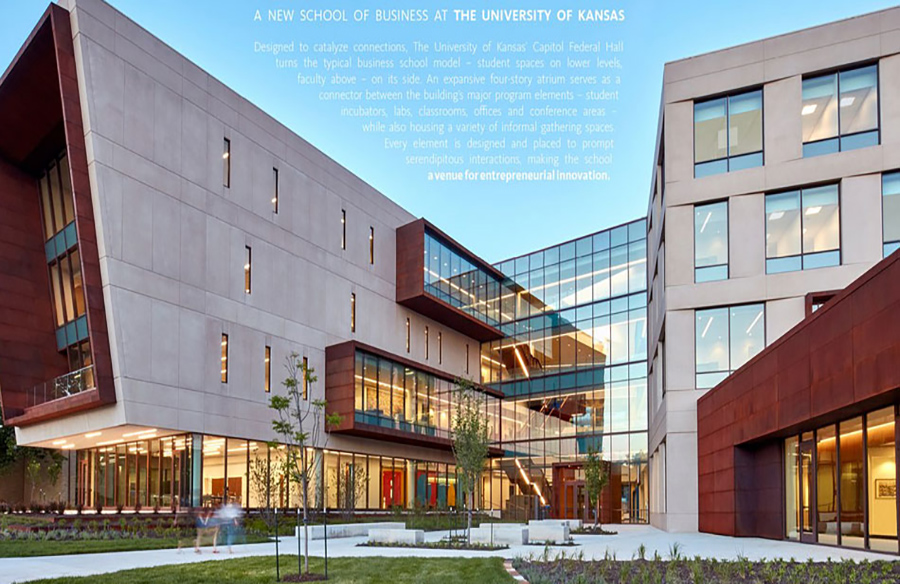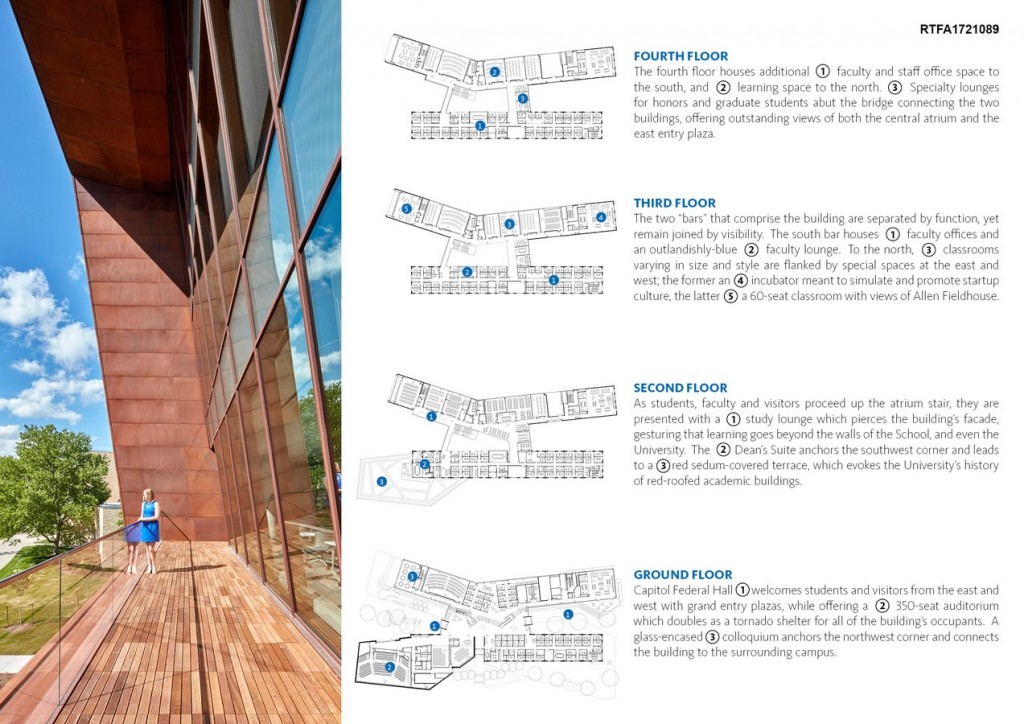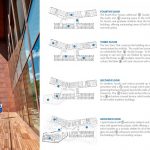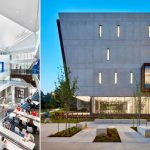People believe that serendipity is about luck. About finding value in chance. But what if it’s not? What if it can be manufactured? We think it can.
If the traditional model of faculty offices being intentionally isolated from learning space was upended, would collaboration take hold? If professors and students could always see each other, and were encouraged to interact with increasing frequency, would something magical take place? We think it would.
Second Award | RTFA 2017 Awards
Category: Institutional (Built)

| Project Details | |
| Studio Name: | Gensler and GastingerWalker& |
| Team Members: | David Broz, Brian Vitale, Lindsey Feola, Geoffrey Diamond |
| Country: | United States |

©Gensler and GastingerWalker&
On many college campuses, faculty offices are, by design, remote from where learning actually takes place – often perched high above the students. But at the University of Kansas’ new 167,000 square-foot Business School, Capitol Federal Hall, faculty are on full-display of students, and students of faculty. Classrooms, incubators and financial laboratories occupy a single, linear volume, while faculty and administrative offices occupy a neighboring one. Between them, a four-story atrium with a dynamic and focal stair plays the crucible – the birthplace of innovation. The ground floor is split between two elevations and then stitched back together by a serpentine grandstand. This isn’t simply lip-service to the campus’ notable topography, it literally marks the transition from the Kansas plains that typify the far reaches of the University to Mount Oread, atop which sits the campus’ historical core, while also providing a crucial place for students to gather and observe.

©Gensler and GastingerWalker&
Capitol Federal Hall aims to manufacture innovation by setting the stage for intersections—between students and faculty, thinking and making, learning and doing, and rethinking the role of the university in a student’s professional development. In every way, the new School of Business points to the future of business education, not the past. The building’s interiors more closely resemble academic incubators and co-working spaces than typical classrooms and lecture halls, offering students a glimpse of the leap from campus to workplace.
The building’s architecture is a simultaneous nod to the University’s rich architectural legacy and a bold charge toward its future. The building opens itself to Allen Fieldhouse, the cultural center of campus, and many of the key spaces within offer framed views of the hallowed arena. In negotiating the old and the new, the high and the low, the student and the teacher, Capitol Federal Hall doesn’t just hope for the serendipitous. It creates it.
- ©Gensler and GastingerWalker&
- ©Gensler and GastingerWalker&





